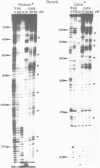Abstract
Four well-characterised DNA-binding ligands have been tested for effects on reconstituted nucleosome core particles containing the 160 bp tyrT DNA fragment. Two, netropsin and berenil, were found to change the rotational orientation of the DNA on the surface of the protein as judged by marked alterations in the pattern of fragments produced by exposure to DNAase I. Qualitatively their effects were very similar to those previously reported for the related antibiotic distamycin, suggesting that the phenomenon of induced rotation may be a characteristic property of ligands which bind in the narrow groove of the DNA helix. Two intercalators did not produce the effect but, at high concentrations, caused gross disruption of the nucleoprotein structure with apparent release of DNA from the histone octamer. At moderate concentrations little or no effect was detectable with nogalamycin, suggestive of failure to bind as a result of constraints on local opening of the DNA helix. With moderate concentrations of actinomycin, protection of GpC sequences was clearly visible together with some evidence of increase in helix pitch, but no sign of altered phasing of DNA within the nucleosome core particles.
Full text
PDF
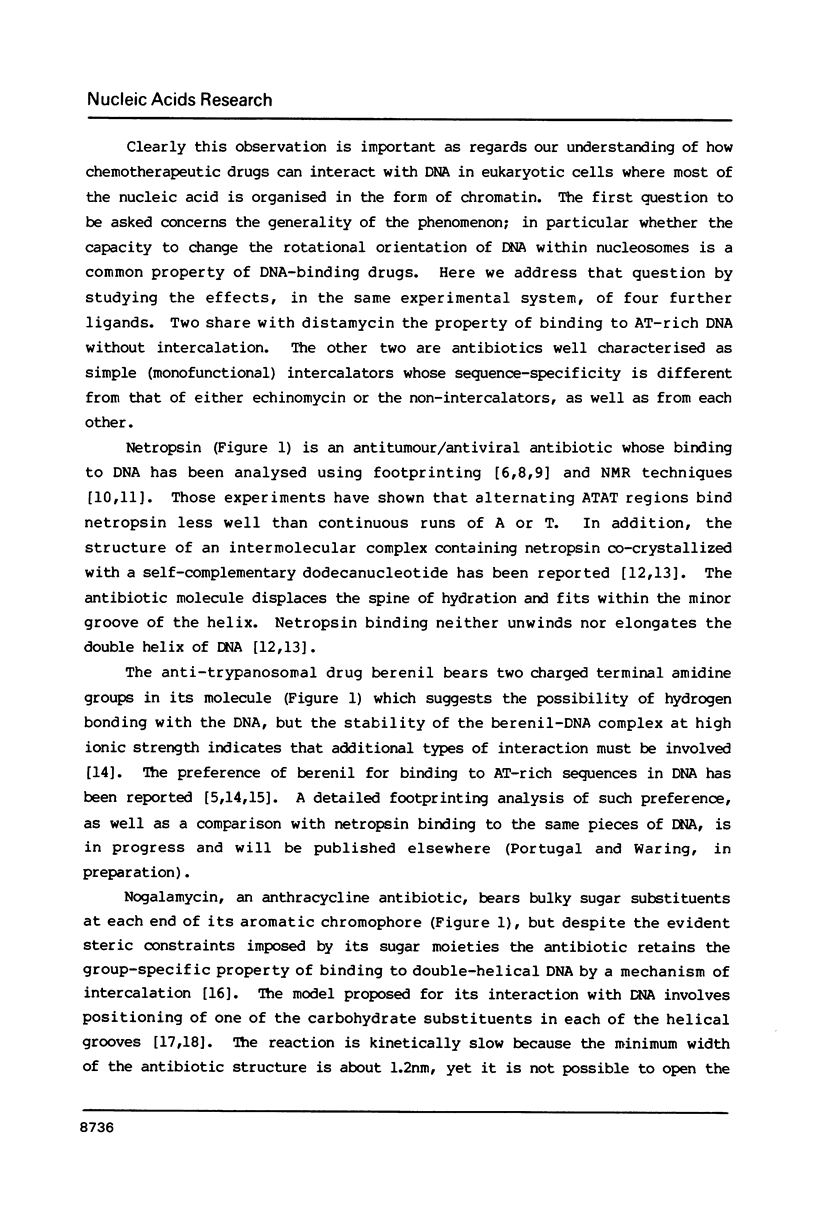

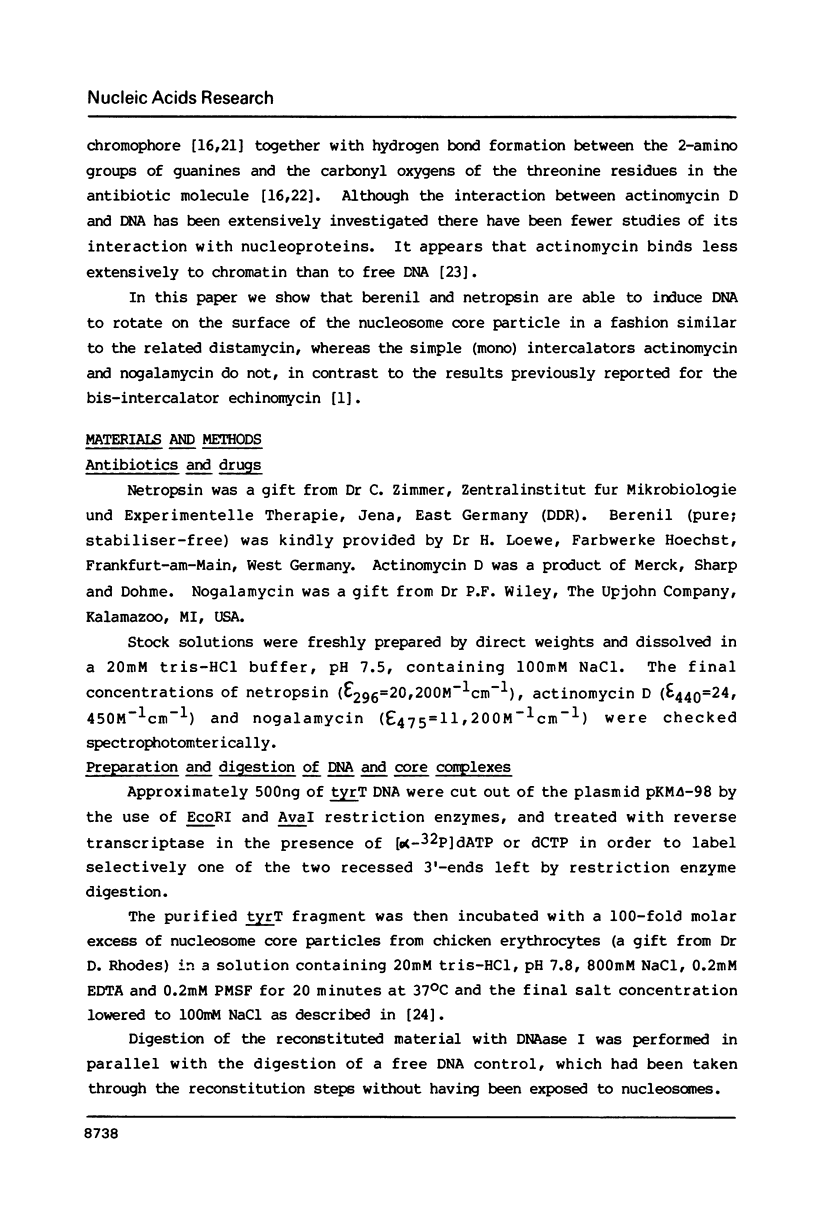
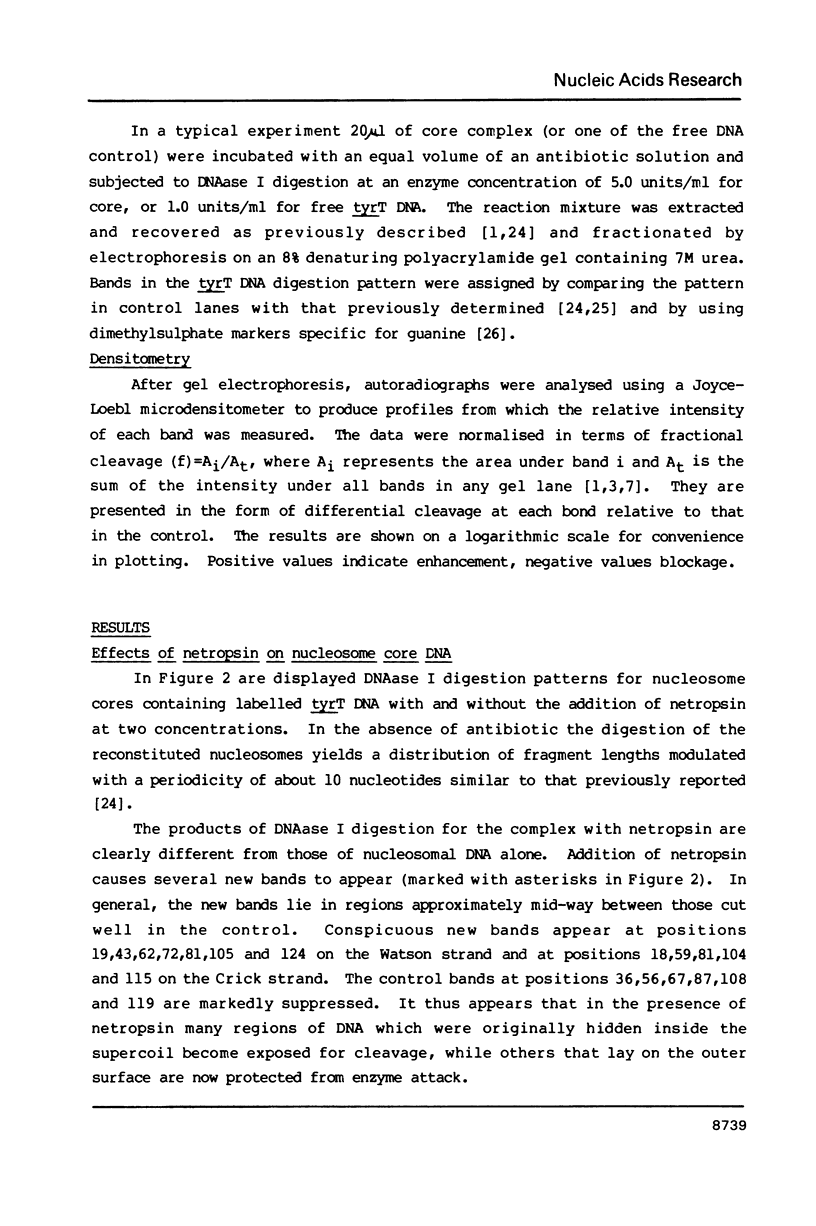
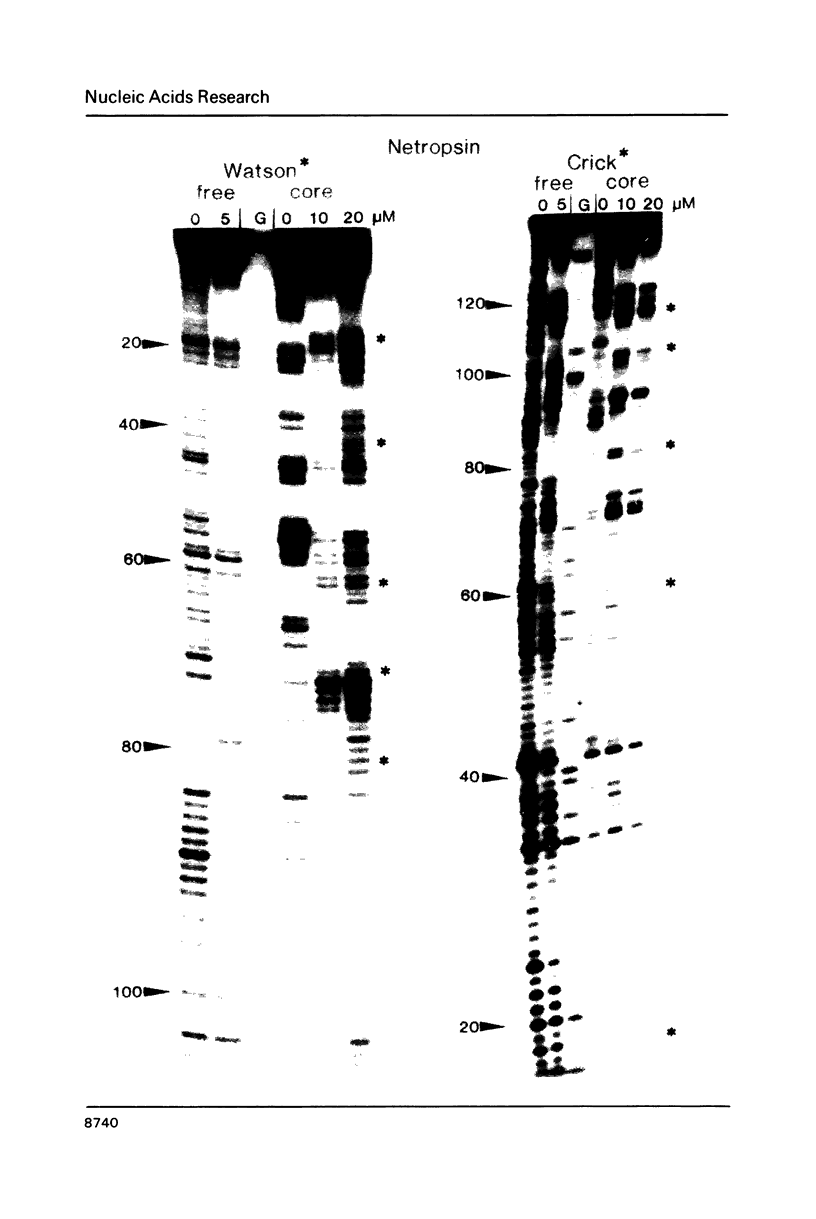
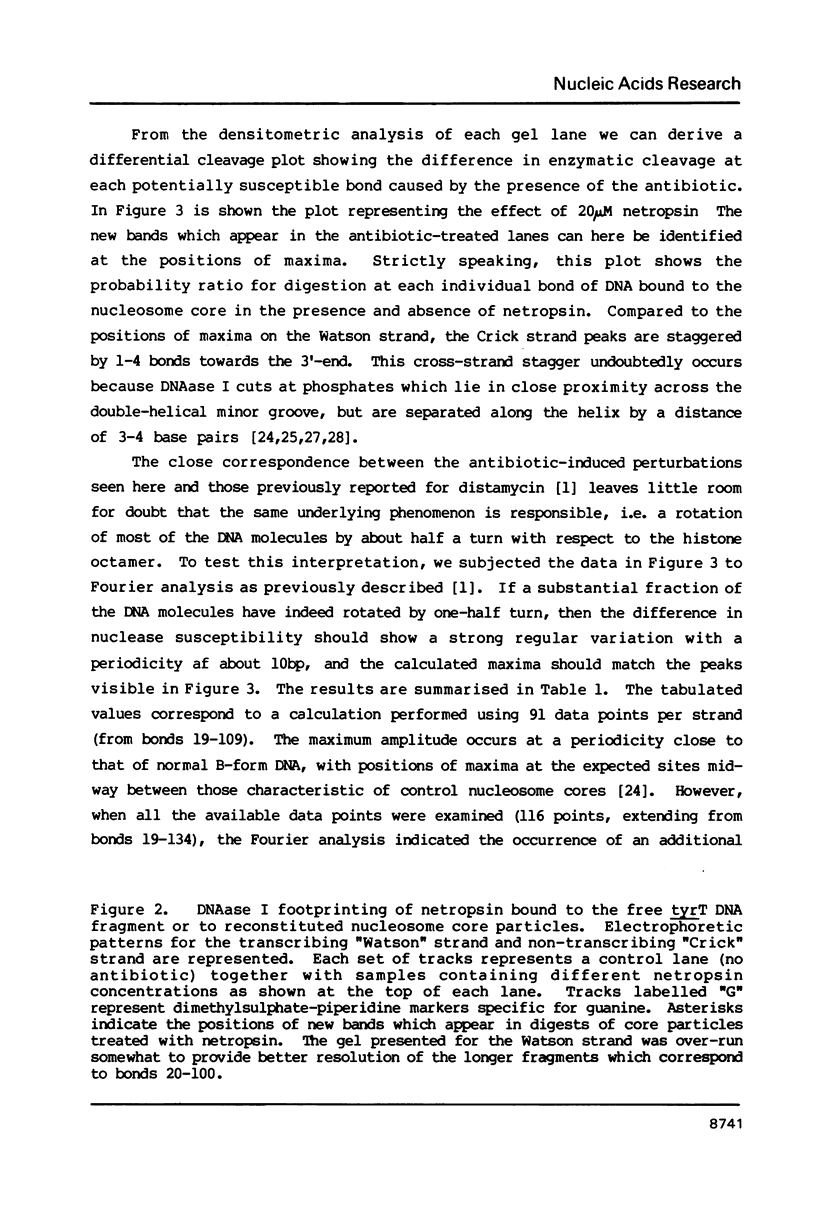
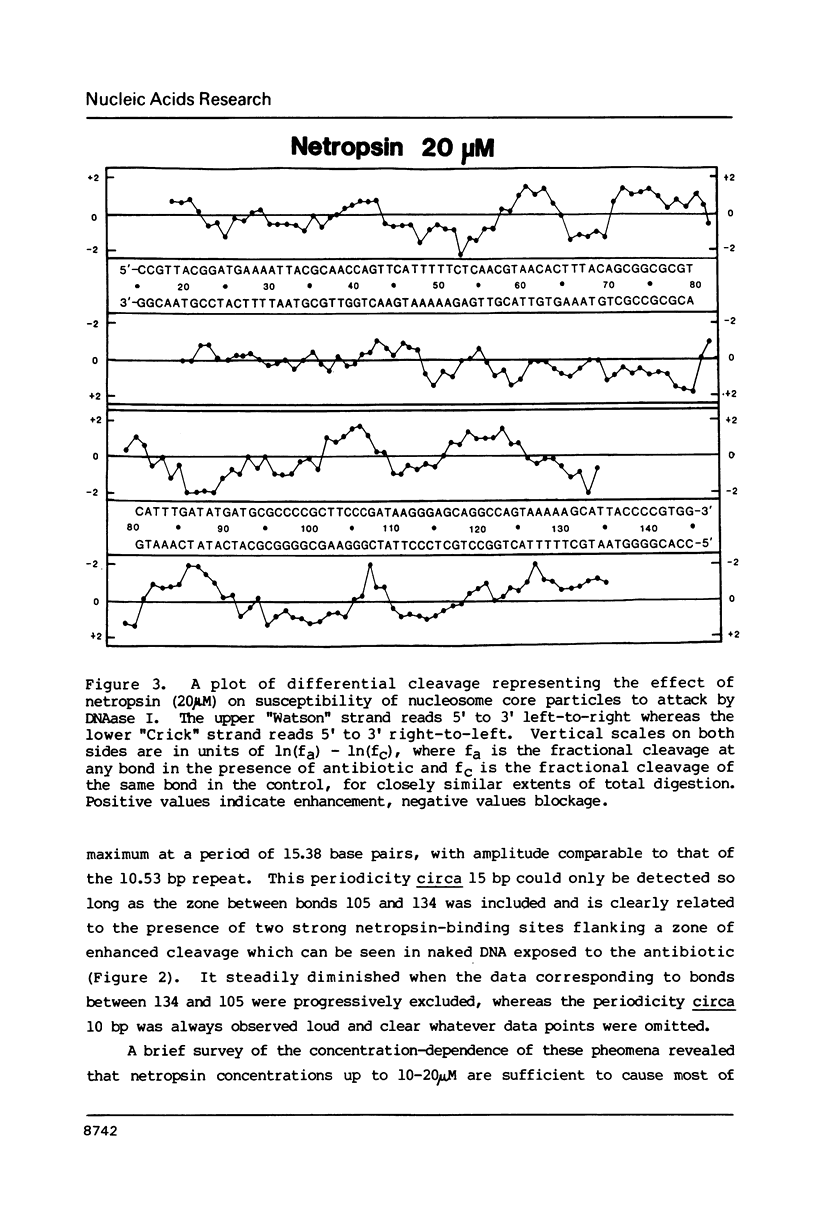
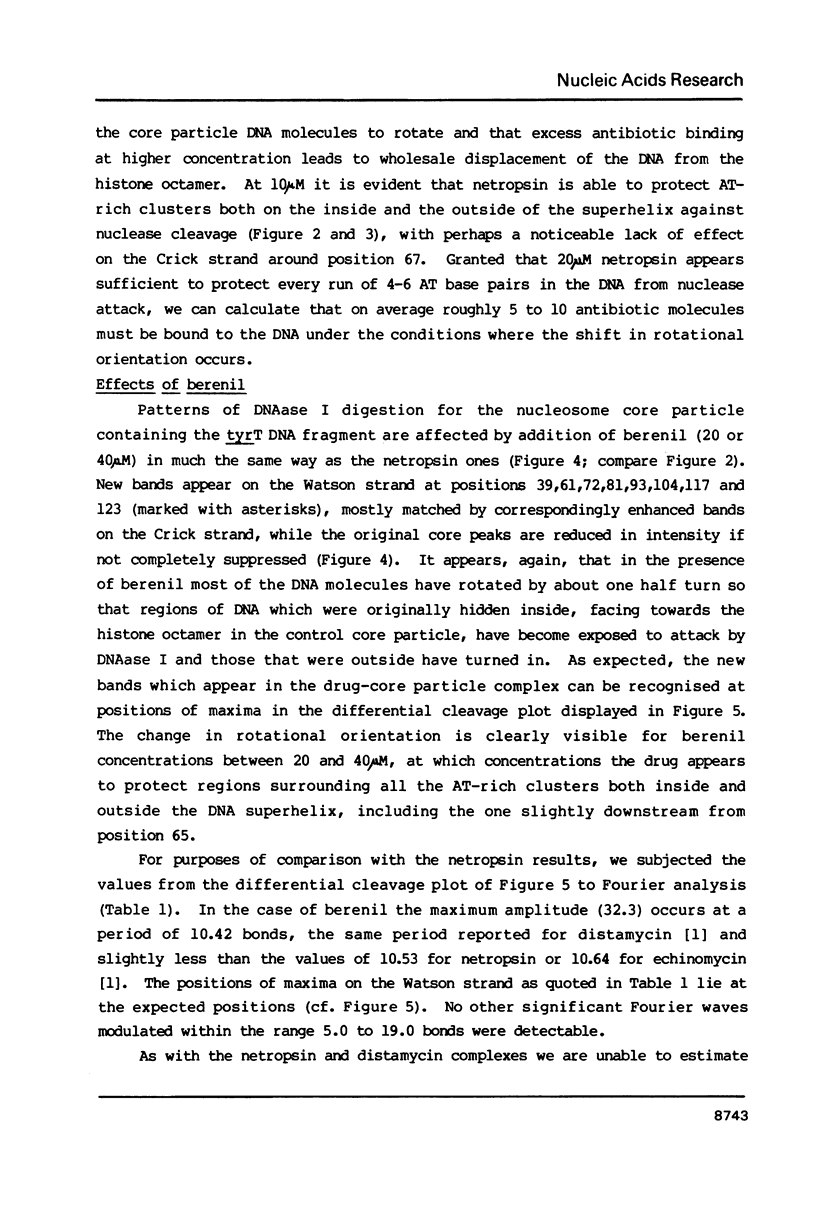


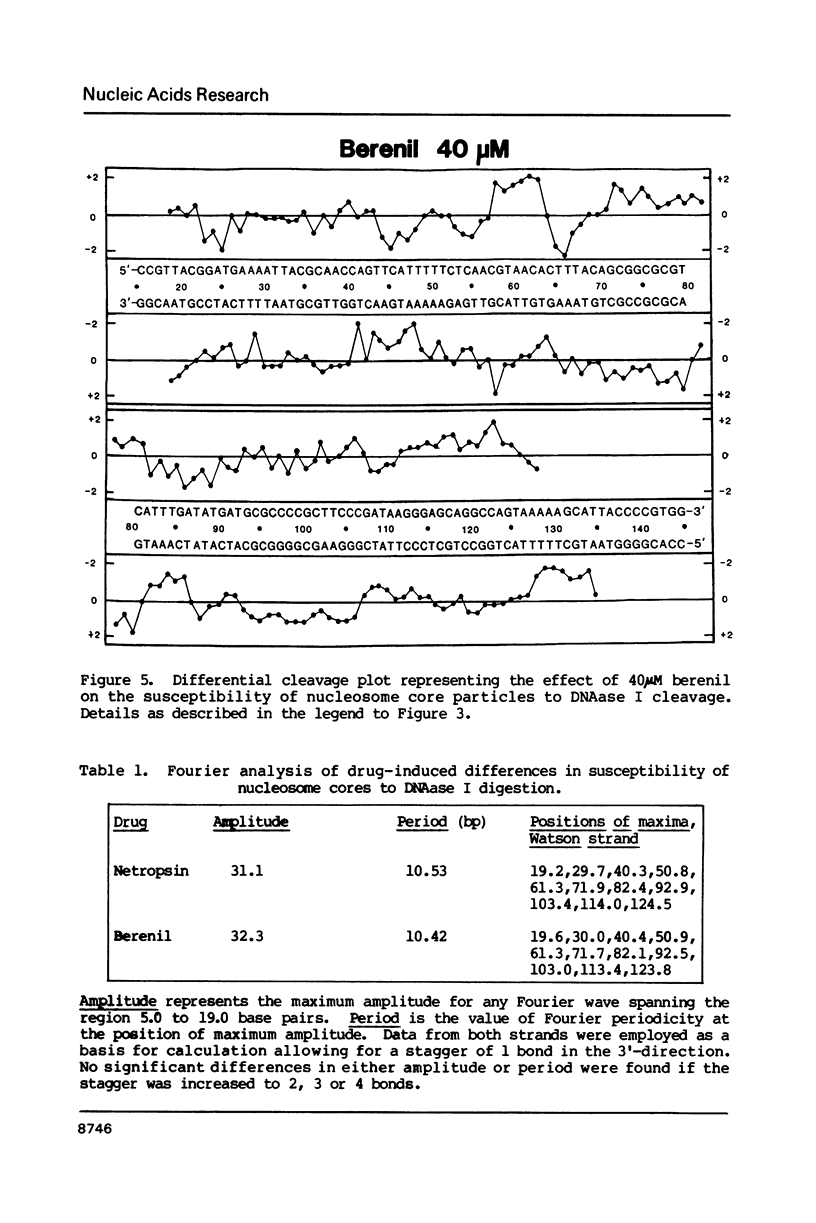
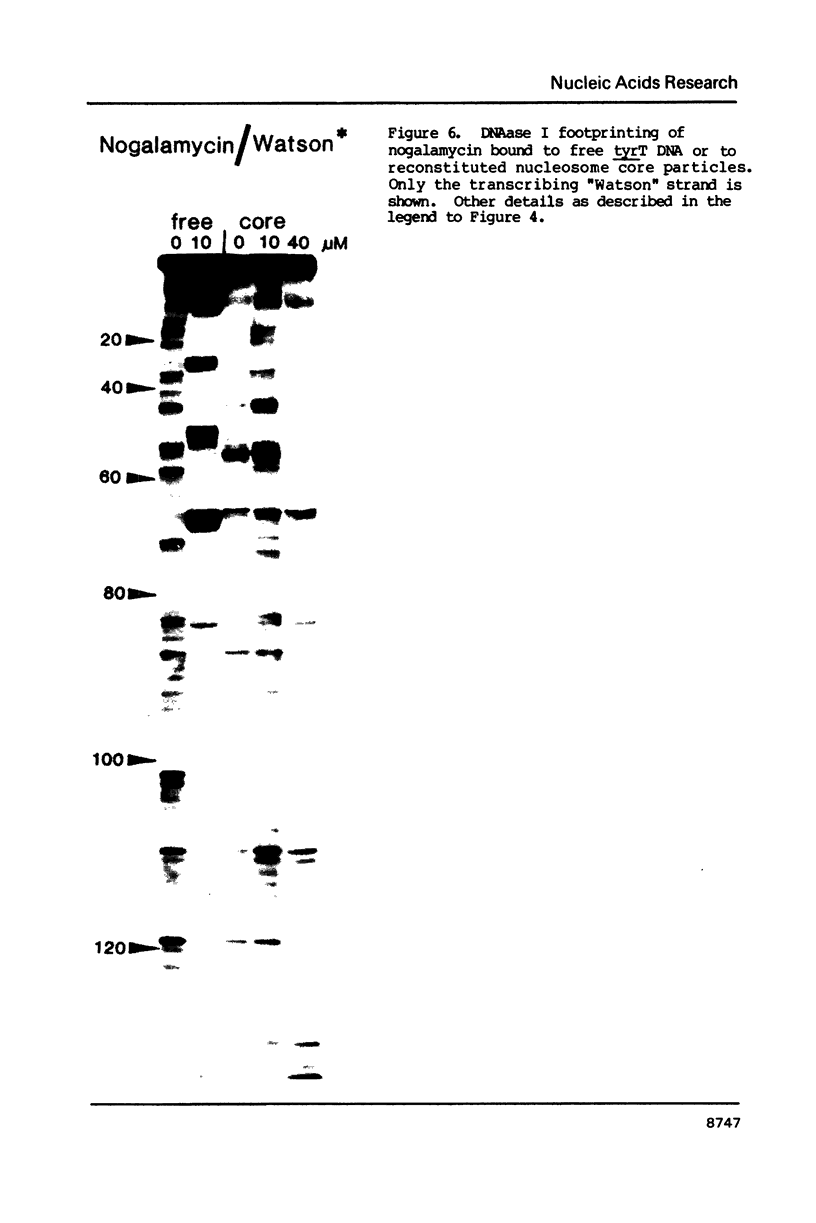





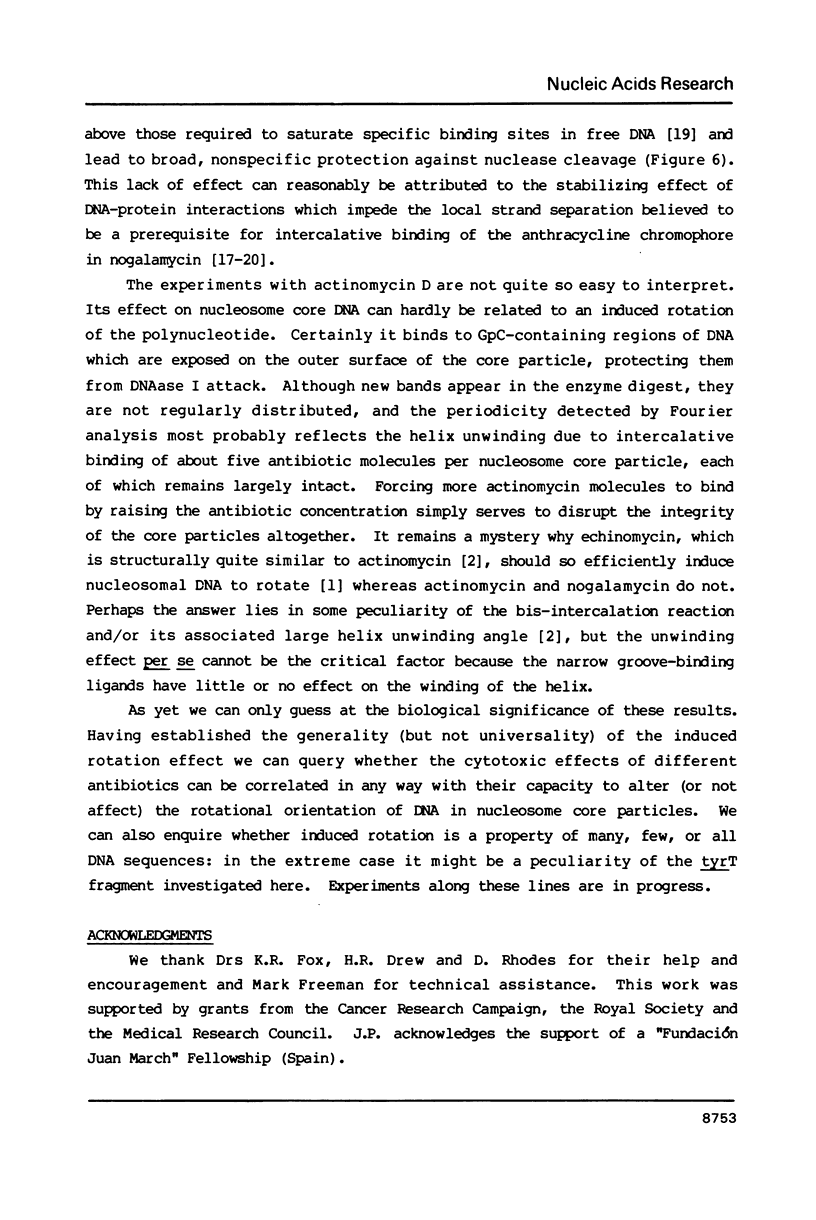

Images in this article
Selected References
These references are in PubMed. This may not be the complete list of references from this article.
- Collier D. A., Neidle S., Brown J. R. Molecular models for the interaction of the anti-tumour drug nogalamycin with DNA. Biochem Pharmacol. 1984 Sep 15;33(18):2877–2880. doi: 10.1016/0006-2952(84)90210-7. [DOI] [PubMed] [Google Scholar]
- Drew H. R. Structural specificities of five commonly used DNA nucleases. J Mol Biol. 1984 Jul 15;176(4):535–557. doi: 10.1016/0022-2836(84)90176-1. [DOI] [PubMed] [Google Scholar]
- Drew H. R., Travers A. A. DNA structural variations in the E. coli tyrT promoter. Cell. 1984 Jun;37(2):491–502. doi: 10.1016/0092-8674(84)90379-9. [DOI] [PubMed] [Google Scholar]
- Fox K. R., Waring M. J. Evidence of different binding sites for nogalamycin in DNA revealed by association kinetics. Biochim Biophys Acta. 1984 Nov 28;802(2):162–168. doi: 10.1016/0304-4165(84)90157-0. [DOI] [PubMed] [Google Scholar]
- Kleiman L., Huang R. C. Binding of actinomycin D to calf thymus chromatin. J Mol Biol. 1971 Feb 14;55(3):503–521. doi: 10.1016/0022-2836(71)90333-0. [DOI] [PubMed] [Google Scholar]
- Kopka M. L., Yoon C., Goodsell D., Pjura P., Dickerson R. E. Binding of an antitumor drug to DNA, Netropsin and C-G-C-G-A-A-T-T-BrC-G-C-G. J Mol Biol. 1985 Jun 25;183(4):553–563. doi: 10.1016/0022-2836(85)90171-8. [DOI] [PubMed] [Google Scholar]
- Kopka M. L., Yoon C., Goodsell D., Pjura P., Dickerson R. E. The molecular origin of DNA-drug specificity in netropsin and distamycin. Proc Natl Acad Sci U S A. 1985 Mar;82(5):1376–1380. doi: 10.1073/pnas.82.5.1376. [DOI] [PMC free article] [PubMed] [Google Scholar]
- Lane M. J., Dabrowiak J. C., Vournakis J. N. Sequence specificity of actinomycin D and Netropsin binding to pBR322 DNA analyzed by protection from DNase I. Proc Natl Acad Sci U S A. 1983 Jun;80(11):3260–3264. doi: 10.1073/pnas.80.11.3260. [DOI] [PMC free article] [PubMed] [Google Scholar]
- Low C. M., Drew H. R., Waring M. J. Sequence-specific binding of echinomycin to DNA: evidence for conformational changes affecting flanking sequences. Nucleic Acids Res. 1984 Jun 25;12(12):4865–4879. doi: 10.1093/nar/12.12.4865. [DOI] [PMC free article] [PubMed] [Google Scholar]
- Luck G., Triebel H., Waring M., Zimmer C. Conformation dependent binding of netropsin and distamycin to DNA and DNA model polymers. Nucleic Acids Res. 1974 Mar;1(3):503–530. doi: 10.1093/nar/1.3.503. [DOI] [PMC free article] [PubMed] [Google Scholar]
- Patel D. J. Antibiotic-DNA interactions: intermolecular nuclear Overhauser effects in the netropsin-d(C-G-C-G-A-A-T-T-C-G-C-G) complex in solution. Proc Natl Acad Sci U S A. 1982 Nov;79(21):6424–6428. doi: 10.1073/pnas.79.21.6424. [DOI] [PMC free article] [PubMed] [Google Scholar]
- Richmond T. J., Finch J. T., Rushton B., Rhodes D., Klug A. Structure of the nucleosome core particle at 7 A resolution. Nature. 1984 Oct 11;311(5986):532–537. doi: 10.1038/311532a0. [DOI] [PubMed] [Google Scholar]
- Schurr J. M., Schurr R. L. DNA motions in the nucleosome core particle: a reanalysis. Biopolymers. 1985 Oct;24(10):1931–1940. doi: 10.1002/bip.360241007. [DOI] [PubMed] [Google Scholar]
- Sobell H. M. The stereochemistry of actinomycin binding to DNA and its implications in molecular biology. Prog Nucleic Acid Res Mol Biol. 1973;13:153–190. doi: 10.1016/s0079-6603(08)60103-8. [DOI] [PubMed] [Google Scholar]
- Van Dyke M. M., Dervan P. B. Echinomycin binding sites on DNA. Science. 1984 Sep 14;225(4667):1122–1127. doi: 10.1126/science.6089341. [DOI] [PubMed] [Google Scholar]
- Van Dyke M. W., Hertzberg R. P., Dervan P. B. Map of distamycin, netropsin, and actinomycin binding sites on heterogeneous DNA: DNA cleavage-inhibition patterns with methidiumpropyl-EDTA.Fe(II). Proc Natl Acad Sci U S A. 1982 Sep;79(18):5470–5474. doi: 10.1073/pnas.79.18.5470. [DOI] [PMC free article] [PubMed] [Google Scholar]
- Waring M. Variation of the supercoils in closed circular DNA by binding of antibiotics and drugs: evidence for molecular models involving intercalation. J Mol Biol. 1970 Dec 14;54(2):247–279. doi: 10.1016/0022-2836(70)90429-8. [DOI] [PubMed] [Google Scholar]
- Wartell R. M., Larson J. E., Wells R. D. Netropsin. A specific probe for A-T regions of duplex deoxyribonucleic acid. J Biol Chem. 1974 Nov 10;249(21):6719–6731. [PubMed] [Google Scholar]
- Youngquist R. S., Dervan P. B. Sequence-specific recognition of B-DNA by oligo(N-methylpyrrolecarboxamide)s. Proc Natl Acad Sci U S A. 1985 May;82(9):2565–2569. doi: 10.1073/pnas.82.9.2565. [DOI] [PMC free article] [PubMed] [Google Scholar]




